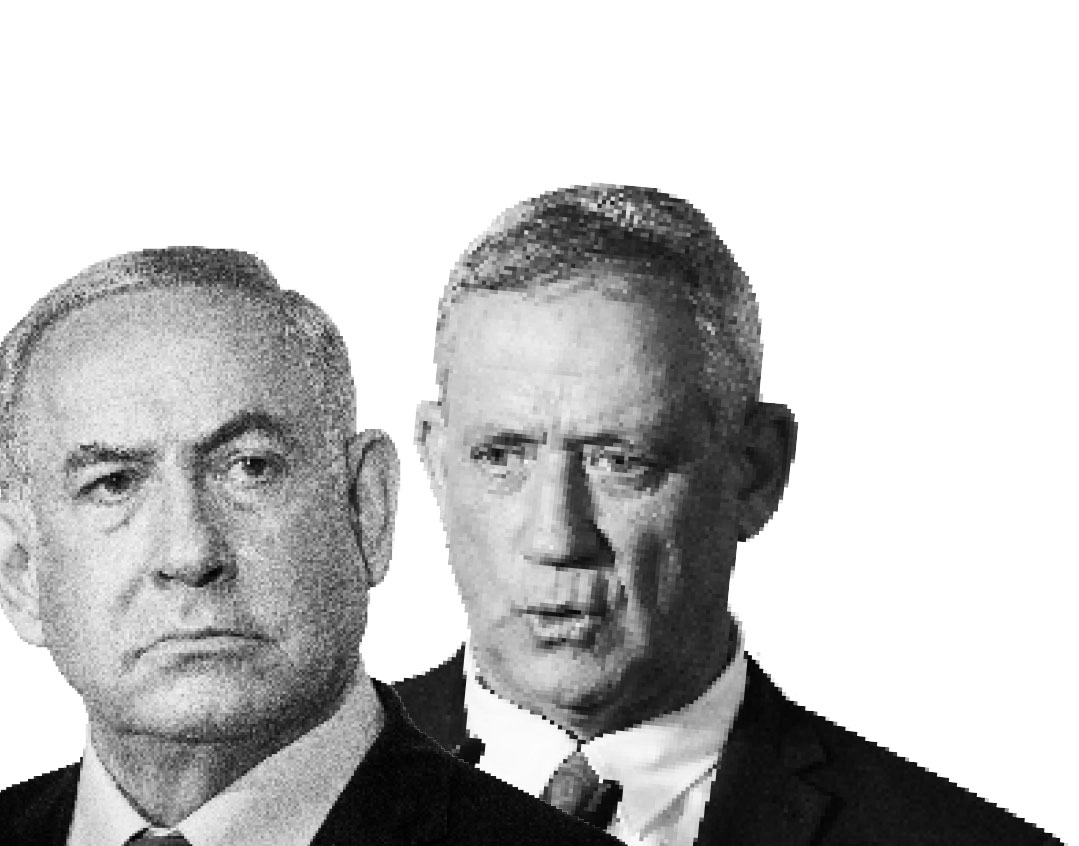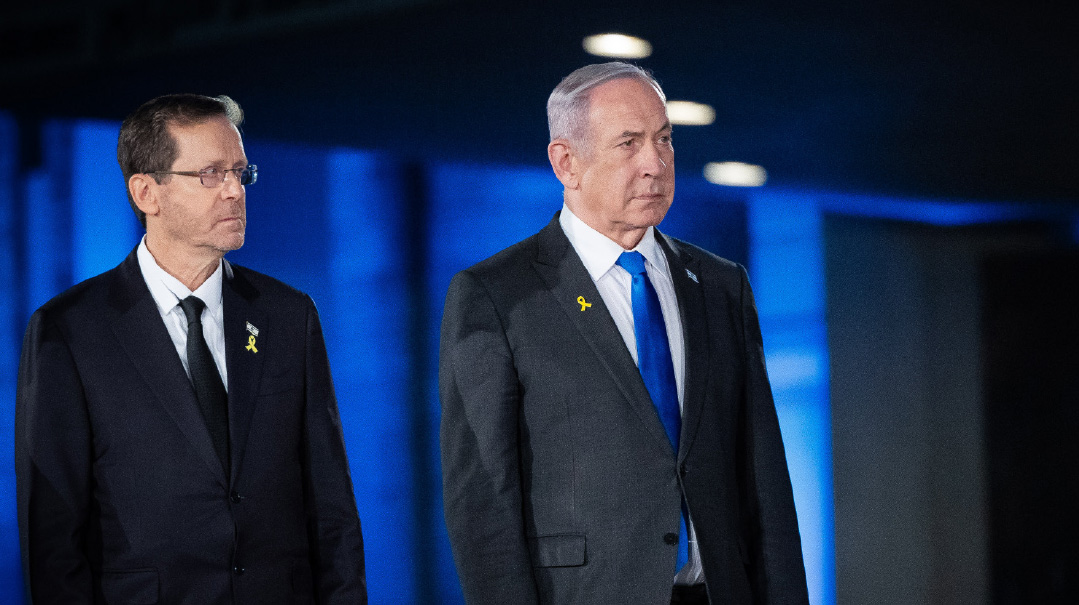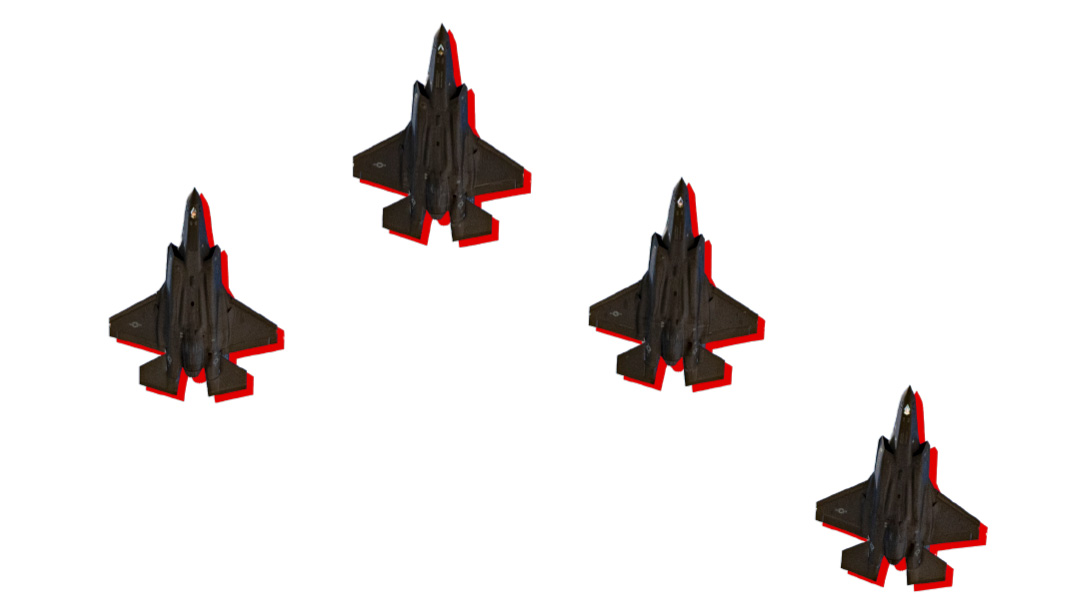Bibi vs. Benny: The 2019 Election Guide


B
y Wednesday morning, we should know the results of Israel’s April 9 election. Here is a preview of what the political scene looks like in the campaign’s final days and where we could be headed in the following 45 days of coalition-building.
What about Bibi’s Legal Problems?
It’s mainly been a nonissue. Again, with the election as a referendum on Bibi, if you support him, you believe the charges are minor, and if you’re against him, he can do no right. However, after the election, Netanyahu is facing both a career milestone and a potential career-ender. If he leads the Likud to victory, by mid-July he will surpass David Ben-Gurion’s record for longevity as an Israeli prime minister. That same month is the tentative date for Netanyahu’s formal shimua, or hearing, with Attorney General Avichai Mandelblit. It will be the last chance for Netanyahu and his attorneys to talk Mandelblit out of indicting Bibi on bribery and breach-of-trust charges. If the Likud should fare poorly next week, no one will need Mandelblit to give Bibi the boot. Voices will be heard inside the Likud calling for Netanyahu’s scalp and to find their own fresh new face to replace him as party leader.
Is Benny Gantz for Real?
The 2019 election is a single-issue campaign: a referendum on Binyamin Netanyahu. The only viable anti-Bibi alternative is Benny Gantz and his Blue and White party. Gantz has credentials. A former IDF chief of staff, he spent 36 years in the military, fighting in or leading ten battles. His one post-IDF venture into business failed and drew criticism from the state comptroller for alleged violations of standard bidding practices. Yet Israelis revere the IDF as an institution and the IDF’s top spot is a proven stepping stone to the Prime Minister’s Office (see Yitzhak Rabin and Ehud Barak). Gantz is telegenic and while he has stumbled in some media interviews, he has also received favorable reviews, and never seems to have two bad interviews in a row, which shows some resilience and that he learns from his mistakes.
Can Bibi Hold Gantz Off?
Ever since the 1996 election, when Israelis went to sleep with exit polls telling them that Shimon Peres defeated Binyamin Netanyahu only to wake up in the morning to discover that Netanyahu won, the media consistently writes Netanyahu off. Pollsters and pundits had Bibi going down to defeat in 2015 as well. In 2009, the polls showing Kadima’s Tzipi Livni defeating Bibi were accurate — however, Livni couldn’t find enough like-minded partners to form a coalition, so Netanyahu ended up as prime minister. Late in this year’s race, the momentum seems to be swinging Netanyahu’s way, with President Trump boosting Netanyahu’s prestige by granting recognition of Israel’s sovereignty over the Golan and Brazil’s Jair Bolsonaro paying an important state visit a week before the vote.
Will Chareidim Turn Out or Off?
The whispers on the chareidi street are that complacency has set in after four years of budgetary plenty with chareidi parties as coalition members. Chareidim also don’t have a flagrant political enemy to fire them up. Gantz has never uttered a bad word about chareidim or religion, while his “running mate” Yair Lapid has been campaigning under the radar and has toned himself down. We’ve heard the cries of gevalt about chareidi voter apathy before, and it’s normally an effective tactic to get the masses out to vote. UTJ’s vote count soared 43% between the 2009 and 2015 elections. And tens of thousands of new 18-year-olds are eligible to vote this year, compared to 2015. However, chareidi parties are rightly concerned about a bloc of an estimated 20,000 voters who have strayed from the chareidi parties to vote for the Likud or religious right-wing parties. That could cost them one seat in the Knesset. Shas too is still trying to recover from the defection of Eli Yishai voters and struggling to make the cut into the next Knesset. With austerity measures looming because Israel’s deficit is running higher than expected, chareidim need a strong bloc of 13 to 14 seats inside the coalition to avoid the brunt of the budget cuts being aimed at them.
How Strong Is the Right Wing?
This is the real wild card of the campaign. Three parties are vying for different factions of Israel’s right. The New Right, led by Naftali Bennett and Ayelet Shaked, are attracting secular voters who see Bennett as defense minister taking a tougher course against Hamas, and Shaked as justice minister finishing the job she started reforming the Supreme Court. The Union of Right-Wing Parties, led by Rabbi Rafi Peretz, the former IDF chief rabbi, includes the Kahane wing, who favor annexing Yehudah and the Shomron. Then there’s the Zehut party, headed by Moshe Feiglin, who once stood trial for sedition for his opposition to the Oslo Accords. Feiglin still advocates abrogating Oslo, but this time, he is winning young secular voters, attracted by his libertarian positions and his proposal to legalize marijuana. Together, these three parties could win as many as 20 seats. So don’t be surprised to wake up the morning of April 10 and read stories about how Israel is now an ultranationalist nation, like Hungary and Austria. Lump them in with another 13 or 14 ultra-Orthodox seats, and the international media will be in a real frenzy.
Would Netanyahu Risk International Wrath by Building an “ultra-coalition”?
Netanyahu can never be accused of lacking self-confidence or belief that his path is the correct course. Bibi trusts in the international relationships he has built and is no longer afraid to be defiant against those who irk him. In that vein, he gets plenty of positive reinforcement from a like-minded leader named President Trump.
There is virtually no chance Netanyahu will join forces with Blue and White. He would rather form a coalition of small, single-issue parties who will immunize him against indictments in return for supporting their agendas than partner with Gantz and Lapid, who would undermine Bibi as soon as they see him being engulfed by legal troubles.
However, he has to keep the small parties off-balance and from making too many demands, so he might well dangle the possibility of a coalition with Blue and White in front of their faces to deflect any maximalist demands.
Any Predictions on What the Final Coalition May Look Like?
First and foremost, nothing can be ruled out in politics. Don’t pay heed to the preelection declarations of who is refusing to sit with whom in a coalition. At the end of the day, it is easier to divvy up the political riches that accrue to coalition members than to accumulate splinters by riding the opposition backbenches.
But this all depends on how many seats the big parties win. Likud could win as few as 30 to 32 and form a center-right-far right coalition. Blue and White don’t have that luxury, however. Should they win 35 or 36 seats, they could form a coalition with Labor, Meretz, and possibly Moshe Feiglin (who has declared he will sit with either winner). From that point, all Gantz needs is either Moshe Kahlon or Avigdor Lieberman to squeak into the Knesset with four seats and he’s Israel’s next prime minister.
(Originally featured in Mishpacha, Issue 755)
Oops! We could not locate your form.













